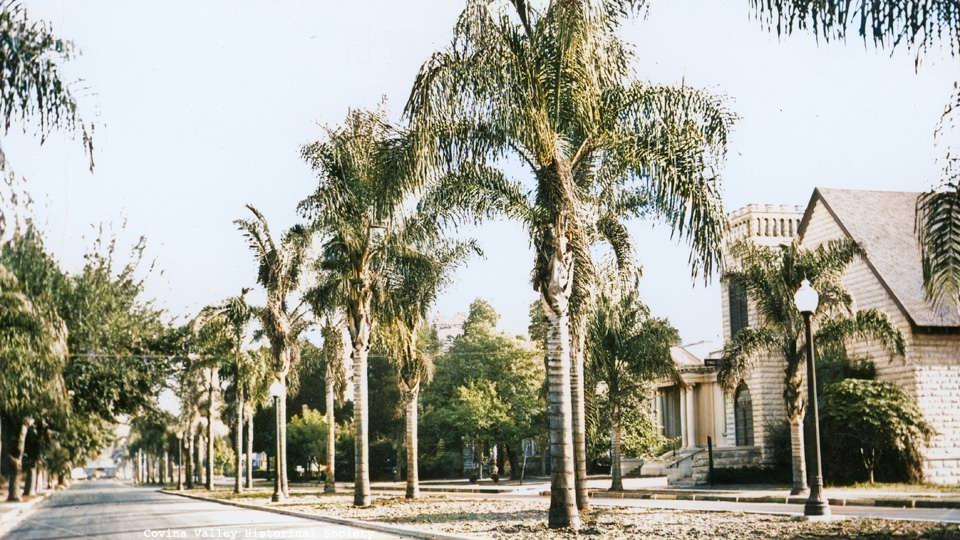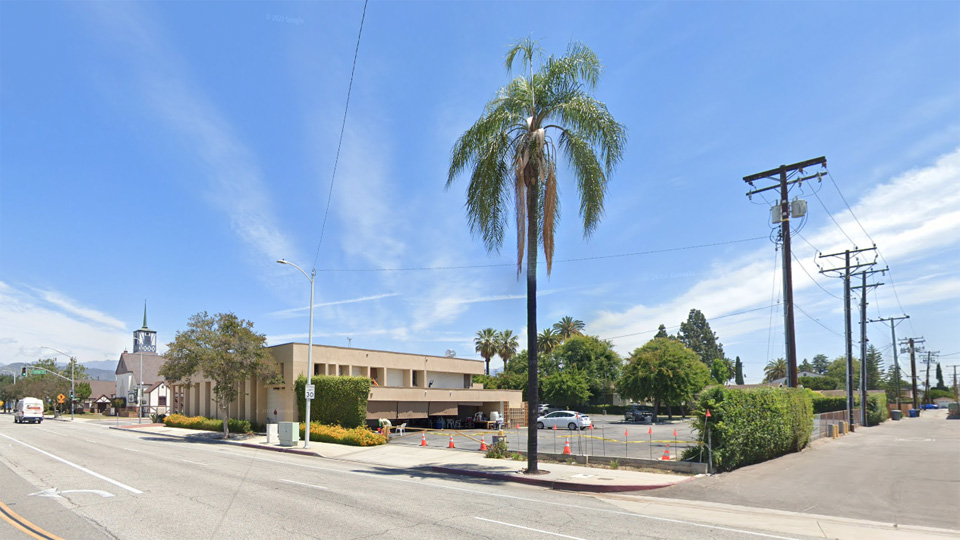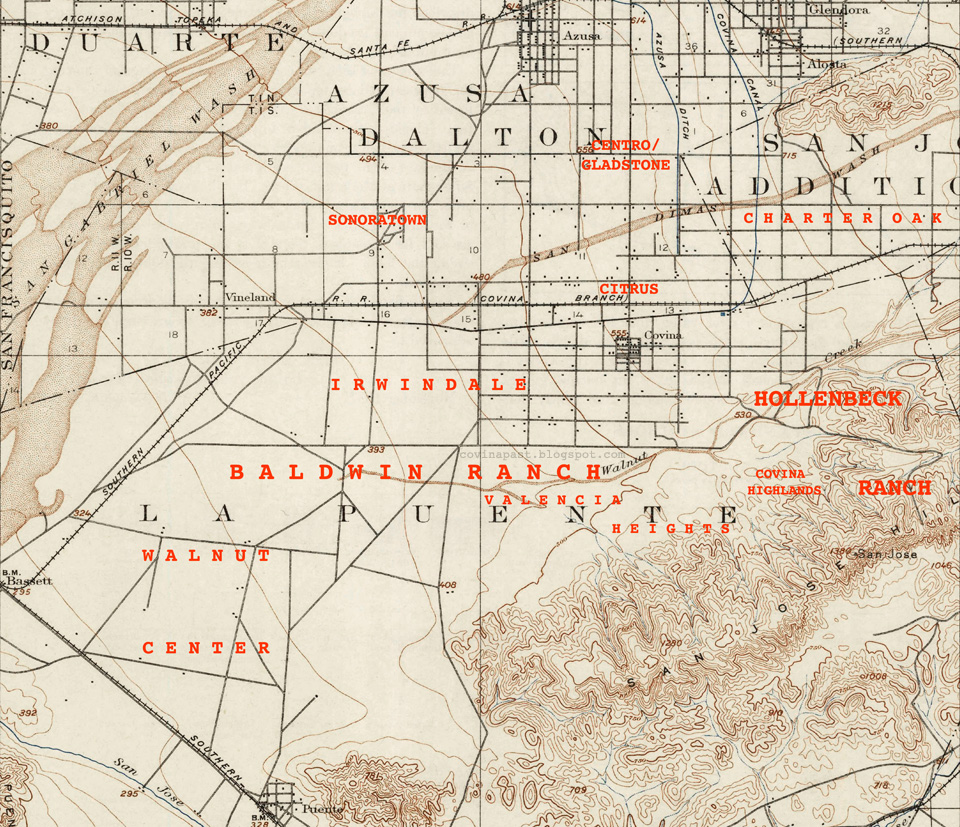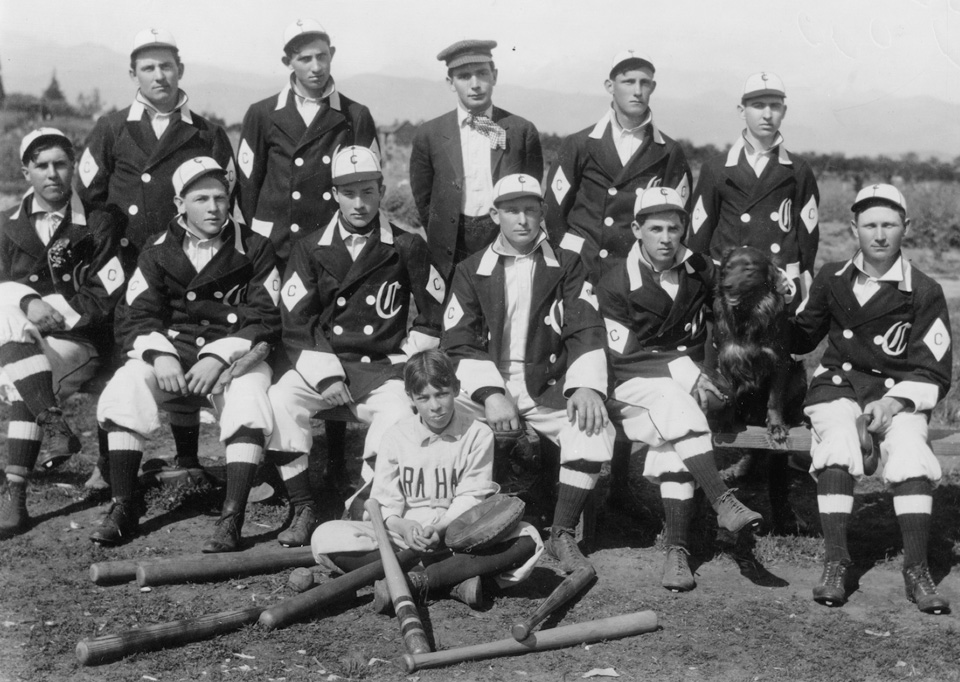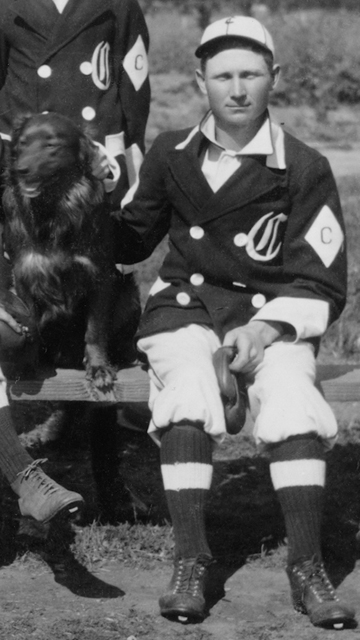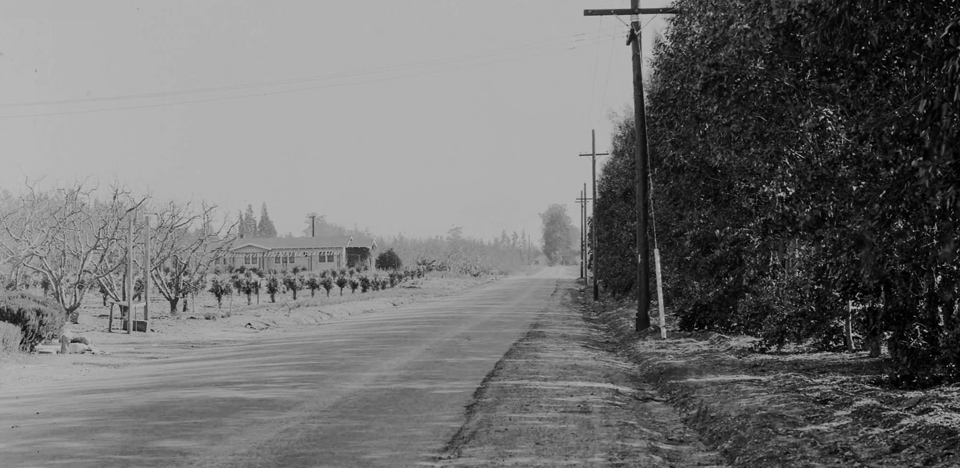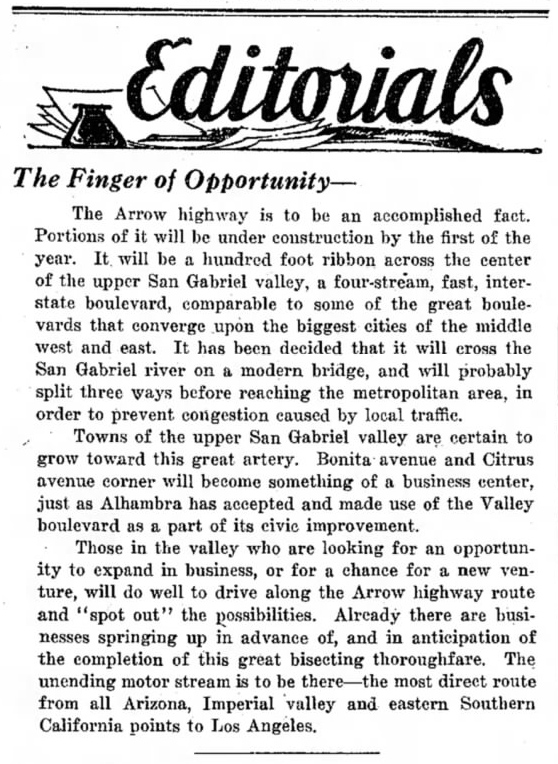When I compiled the Covina History Timeline almost ten years ago, I included several entries that pertained to local educational institutions, but the number and scope of those mentions was necessarily limited. This new timeline delves into the history of Covina's schools in much greater detail. Most of the information presented here concerning schools of the postwar era was drawn from a book published in 1996 by the Covina-Valley Unified School District entitled "Centennial 1896-1996." Other references include Donald Pflueger's histories of Glendora (1951) and Covina (1964), Dr. Barbara Ann Hall's Covina (2007), and newspaper articles of the day found in the online archive Newspapers.com. Citations for specific entries are available upon request. Please bear in mind: this timeline is an ongoing work in progress. Corrections, additions, and their supporting documentation are always welcome.

Circa 1850 – "Don Enrique" Dalton sets aside a room on his Rancho Azusa where the children of the upper valley's earliest settlers can learn their Three Rs.
18611 – Dalton builds the first enclosed structure dedicated to classroom instruction on the lands east of the San Gabriel River. Called the Brush School because of the thatch used for its roofing, it is said to resemble "a covered corral." Seventeen pupils attend the first year.
1872 – The Azusa Valley's first wood frame schoolhouse–Center School–is built at the southeast corner of today's intersection of Cerritos Avenue and Gladstone Street. Through its various incarnations since, Center School has now been in continuous operation on the same grounds for over 150 years.
1873 – Lower Azusa School–the first in what will become the Covina area–opens for classes south of the Azusa Cañon Road and west of San Dimas Wash (now the southwest corner of Cypress Street and Lark Ellen Avenue).
1883 – The new Covina townsite's first schoolhouse–the Phillips School–opens at the southeast corner of San Bernardino Road and Citrus Avenue.
1887 – Center School is expanded to four rooms and is the first in the valley to organize classes by grades.
1891 – Citrus Union High School is established to serve the communities of Azusa, Glendora and Covina.
1894 – Two new 2-storey schoolhouses are constructed to replace the pioneer-era Phillips and Lower Azusa buildings. Charter Oak also opens its own school at the southwest corner of Bonnie Cove and Cienega Avenues.
1896 – The Covina School District is formed.
1899 – Covina begins offering secondary-level education on the upper floor of the newly expanded 1894 Grammar School. Lillian Harris is the first graduate of Covina High in Spring, 1900.
1902 – In March, the citizens of Covina approve bonds for the erection of the city's first high school. Located on San Bernardino Road behind the grammar school and facing Park Avenue, the new building is completed in December. Only five years later, however, the need for a much larger facility becomes clear.
1907 – The Covina Union High School District is established to provide secondary education to the communities of Covina, Charter Oak, Lower Azusa/Vineland (Baldwin Park), and Walnut Center/Irwindale (West Covina).
1908 – Voters approve bonds to fund the purchase of land and construction of the larger high school.
March 30, 1909 – Dedication ceremony of Covina Union High School. Located on the west side of Citrus Avenue between Puente and Dexter Streets, instruction at the new civic landmark begins on September 20.
1909 – Irwindale School opens south of Walnut Creek on the west side of today's Sunset Avenue halfway between Cameron and Merced. Eleven students are enrolled in its first year. In 1914, the name is changed to West Covina School, and to Sunset School in 1950.
1909 – The Covina School District proposes the creation of a school to serve the Mexican community at Sonoratown (today's City of Irwindale). The first Merwin School is located on the south side of Bonita Avenue (Arrow Highway) just east of Irwindale Avenue.
1910 – The building that formerly housed Covina's first high school is renamed the Phillips School; it is used for 1st/2nd graders and District offices. The 1899 grammar school is renamed the Reed School for philanthropist Dr. James D. Reed, and Lower Azusa is renamed for famed singer "Lark" Ellen Beach Yaw.
1910 – Noted educator Miss Eva Dell Edwards (1876-1967) begins teaching History and English to 7th and 8th graders at the Covina Grammar School, where she will soon become Principal.
1912 – The District gives permission for Miss Jane Jordan to use a room at the Reed School for a kindergarten.
1912 – Covina acquires its first school bus.
1915 – The Citrus Union High School District opens Citrus College: the first public community college in Los Angeles County.
19162 – Dedication of the Masonic Home on East Badillo Street in Charter Oak.
1919 – The fourth and last Covina Grammar School is constructed on Citrus Avenue at San Bernardino Road. The architect is John C. Austin, who will later design the iconic 1928 Los Angeles City Hall.
1920 – The second Lark Ellen School opens on the original Lower Azusa School site. The new building (also designed by Austin) serves grades 1-8, has four classrooms and an assembly room.
1920 – The former high school building is moved to the southwest corner of Second and School Streets and dedicated as the Covina Masonic Temple.
1922 – Charter Oak School dedicates a new building with 8 classrooms.
1925 – A new wing–Science Hall–is added to Covina Union High School. Later additions to the campus include a gymnasium (1927), a music building (1935), and four classrooms adjacent to the athletic field (1949).
1926 – The California Preparatory School for Boys builds a new campus on the Pomona Road (today's Covina Hills Road) southeast of town.
1928 – The Voorhis School for Boys opens adjacent to Walnut Creek off of South Valley Center Avenue in Charter Oak.
1932 – Covina Union High School offers the area's first evening adult education classes.
1938 – The California Polytechnic School acquires the Voorhis School for its southern campus. In 1956, it moves to the former Kellogg Ranch and becomes Cal Poly Pomona.
1942 – Cal Prep closes its campus in the Covina Hills and moves to Ojai.
1946 – Classes begin at Mount San Antonio College in Walnut.
1950 – Barranca Elementary opens. The first new facility of the post-WWII period, Barranca today is the oldest school in the C-VUSD.
1950 – More than 1,500 students are enrolled at the now seriously overcrowded high school.
1951 – The State Board of Education orders the closure of the old Merwin School. The students are reassigned elsewhere in the District.
1951 – The California Baptist Theological Seminary opens on Covina Hills Road, occupying the former campus of the California Preparatory School.
1952-1957 – To accommodate skyrocketing enrollments, the District leases classroom space in Covina Park, the Methodist, Presbyterian and Christian churches, the Baptist Seminary, and a commercial building on the west side of Second Street south of Navilla Place (Second Street School).
1953 – Griswold Elementary opens, and the students who attended the former Merwin School are reunited on the new campus.
1953 – Construction begins on the third Lark Ellen School, and the 1919 Covina Grammar School on Citrus Avenue is closed.
1953 – Sacred Heart Parish opens its parochial school on West Workman Avenue. The auditorium is consecrated as a church.
1954 – Charter Oak Elementary opens a new modern building complex on its old Bonnie Cove grounds.
1955 – Ben Lomond Elementary, Rowland Avenue Elementary and Traweek Intermediate open.
1956 – Covina Elementary, Workman Avenue Elementary and Eva D. Edwards Intermediate open.
Fall, 1956 – Covina High moves to its new campus on Hollenbeck Avenue, and West Covina High holds its first classes at the former CUHS campus. WCHS will move to its new site on Cameron Avenue in West Covina the following Fall.
1957 – Grovecenter, Cypress and Sunkist Elementary open.
1958 – Pioneer and Valencia Elementary open, as does Badillo Elementary in Charter Oak.
1958-1959 – Edgewood Freshman High School opens for the final year of secondary instruction at the CUHS campus on Citrus Avenue.
1959 – Fairvalley Elementary and Las Palmas Intermediate open.
Fall, 1959 – Classes begin at the new Northview High on Cypress Street, Charter Oak High on East Covina Boulevard and at Edgewood High at Merced and Orange Avenues in West Covina.
1960 – Formation of the Covina-Valley Unified School District.
1960 – The Covina-Valley, Charter Oak and West Covina Unified School Districts agree to jointly sponsor the Tri-Community Adult Education program.
1960 – Manzanita, Mesa and Vincent Elementary open, and Ruddock Elementary opens in Charter Oak.
1960-1961 – Overflow elementary students are the last to occupy classrooms on the old CUHS campus.
1961 – Cedargrove Elementary opens in Charter Oak.
1962 – Cienega Elementary and Sierra Vista Intermediate open.
June, 1962 – The 1927 gymnasium at the former Covina Union High School is destroyed in an arson blaze and the entire complex is razed soon after.
1963 – The Merwin School reopens on a new campus on Cypress Street in Irwindale, and Banna Elementary opens in Charter Oak.
Winter, 1963-1964 – Gladstone High opens.
Fall, 1964 – South Hills High opens.
1965 – Royal Oak High opens.
1966 – Central High Continuation School is established, and Palm View Elementary opens adjacent to ROHS in Charter Oak.
1967 – The Covina-Valley Unified School District reaches its peak enrollment of 18,055 students.
1969 – The old Covina Grammar School building on Citrus is razed for a proposed new Civic Center that is never built.
1970 – Pioneer Elementary closes due to declining enrollment.
1971 – Fairvalley Elementary closes but reopens the following year as the new campus for Central High Continuation School.
1974 – Griswold Elementary closes and becomes a Tri-Community Adult Education center the following Fall.
1974 – The Baptist Seminary confers its last ministry degrees at Covina and moves its central campus to Berkeley.
1975 – Charter Oak Elementary closes, and the former Pioneer campus reopens as another Tri-Community location.
1979 – Vincent Elementary closes, as do Banna Elementary and the intermediate grades at Cedargrove in Charter Oak.
1980 – Sunkist Elementary closes, and the C-VUSD continuation school is renamed Fairvalley High.
1981 – Cienega Elementary closes.
1983 – Eva D. closes and the land is sold for condominiums.
1985 – In Charter Oak, Royal Oak is converted to an intermediate school, and Ruddock is closed.
1988 – The Ranger High independent study program begins at Fairvalley.
1996 – The Covina-Valley Unified School District commemorates its 100th anniversary.
2017 – The District votes to close Lark Ellen Elementary, ending 144 continuous years of primary school education on those grounds.
2021 – The former Vincent campus is demolished.
2022 – The former Griswold campus is demolished.

Footnotes:
1 Pflueger (1951) cites a contemporary account (Dole, S. A. 1900. "History of the Azusa Valley," Citrus High School Annual) which states that 1861 was the year Dalton built the Brush School. As that was written at a time when the event could still have been within people's living memory, I believe 1861 is the more credible date than the commonly accepted 1868.
2 Other sources give 1917 as the year of the dedication of the Covina Masonic Home, but the Masons themselves celebrated its centennial on June 26, 2016, and also refer to a time capsule buried on the grounds in 1916, so in my view this establishes 1916 as the correct date.
